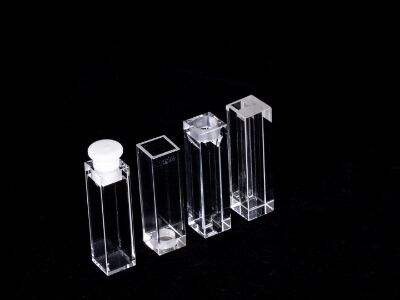Selecting the Appropriate Cuvettes in UV-Vis The correct cuvette makes a world of difference in UV-Vis. There are other considerations when choosing cuvette for this type of work. For instance, you must think about the material of the cuvette, about how thick it is, how clean and see-through it is, how it is designed and how much it costs. All of these factors can impact how well the cuvette will work and how accurate and repeatable your results will be.
Selecting the Optimal UV-Vis Cuvette Material
The construction material of your cuvette matters too, as it can impact how well it performs for UV-Vis studies. Some materials also could absorb UV or visible light, which would then affect your results. It is crucial to use a material that is transparent to the wavelengths of light that you will be using. Cuvettes are typically made of quartz or glass as these materials are transparent in the UV and visible part of the spectrum. Plastic cuvettes are also found and can be suitable for some purposes.
Investigating how Cuvette Pathlength Affects Results ofUV-Vis Spectroscopy
The cuvette's pathlength is a factor to consider as well. Pathlength: The length of the cuvette that light passes through. Increased pathlengths can facilitate the detection of a sample at very low concentrations, but may also introduce measurement error. Shorter pathlengths might be more precise, but would also struggle with low concentration samples. Note : Be sure to select a cuvette with the appropriate pathlength for your application.
Cuvette Selection for UV-Vis: Why Transparency and Cleanliness Matter
UV-Vis applications Cuvetts and optical cells for UV-Vis applications, must also have a high level of transparency and cleanliness. So, if your cuvette is dirty, you may not get accurate results. Even tiny particles or fingerprints on the cuvette can scatter light, giving imprecise readings. The cuvette must be washed well before using and must be gently handled so that no oils or dirt stick to it. A cuvette that is transparent is also essential, because you want all the light to go through your sample, and not be absorbed or scattered.
Understanding How Cuvette Design Contributes to Temperature Control Helps Ensure Accurate UV-Vis Readings
The cuvette's construction may also influence temperature stability when acquiring UV-Vis reads. Certain cuvettes also have a temperature-control feature that is necessary for precision measurements. As the sample temperature might change during the measurement this can have an impact on the recorded absorbances. Other cuvettes are specifically designed to include double walls or other construction to aid in keeping the temperature stable. The selection of a cuvette with an appropriate design is crucial for your type of application.
Achieving Value and Performance in Choosing a Cuvette for UV-Vis Spectrophotometry
Finally, affordability needs to be weighed with performance when selecting a cuvette for UV-Vis analysis. Some cuvettes exist that are more expensive, but that may offer higher performance or durability. But there are some lower-cost options that may be suitable for your particular use case. When selecting a cuvette, you will need to consider the cost and performance level that you require. To make life even simpler Jinke Optical has a choice of cuvettes, all at different price points so you can choose the one that’s right for you and not break the bank.
In summary, cuvettes the factors to be taken into account in the selection of a cuvette for UV-Vis applications include: (1) Material; (2) pathlength; (3) transparency; (4) cleanliness; (5) design and (6) cost. All of these things can affect the functionality of the cuvette, and the accuracy of the results you see. So whether (your) looking for a quality or budget cuvette for (your) application, be sure to choose carefully in order to get correct results from (your) UV/Vis reading. Jinke Optical has everything you need to meet your requirements, and you can choose from cuvette to find your best option for your work or research.
Table of Contents
- Selecting the Optimal UV-Vis Cuvette Material
- Investigating how Cuvette Pathlength Affects Results ofUV-Vis Spectroscopy
- Understanding How Cuvette Design Contributes to Temperature Control Helps Ensure Accurate UV-Vis Readings
- Achieving Value and Performance in Choosing a Cuvette for UV-Vis Spectrophotometry
 EN
EN
 AR
AR
 BG
BG
 HR
HR
 CS
CS
 DA
DA
 NL
NL
 FI
FI
 FR
FR
 DE
DE
 EL
EL
 HI
HI
 IT
IT
 JA
JA
 KO
KO
 NO
NO
 PL
PL
 PT
PT
 RO
RO
 RU
RU
 ES
ES
 SV
SV
 TL
TL
 ID
ID
 LV
LV
 SR
SR
 SK
SK
 UK
UK
 VI
VI
 HU
HU
 MT
MT
 TH
TH
 TR
TR
 FA
FA
 AF
AF
 MS
MS
 GA
GA
 IS
IS
 LA
LA
 KK
KK







